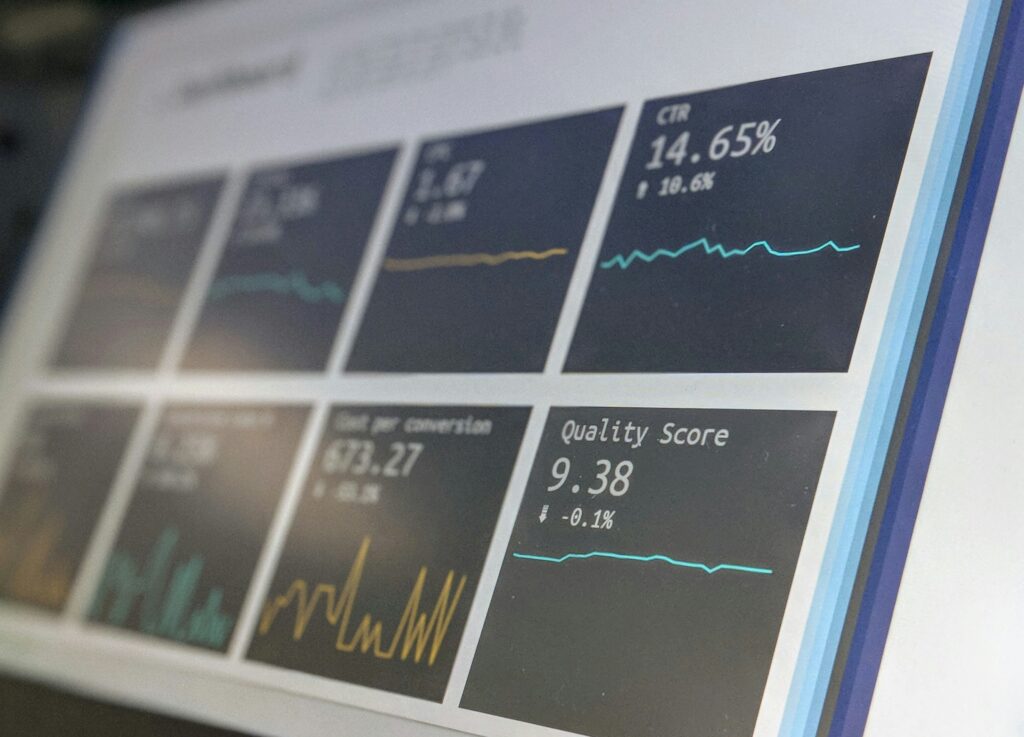By Michael K. Adonteng
Dec 11th, 2024
In sales, as in many areas of business, you can’t improve what you don’t measure. However, the key to effective measurement isn’t just knowing the end results, but understanding the activities that drive those results. This is where leading and lagging metrics come into play. At Africa Sales Academy, we often advise sales professionals to use a balanced approach to tracking performance, with a mix of both leading and lagging metrics. This approach not only helps in achieving immediate targets but also provides insights that drive sustainable growth.
Let’s explore some key sales goals and the most relevant leading and lagging metrics for each, so your team can effectively manage progress and adapt strategies to optimise outcomes.
1. Acquiring More Customers
Acquiring new customers is fundamental for growth. However, it’s important to track both the activities leading to new acquisitions and the actual customer count.
- Leading Metrics: These focus on the activities that bring in new clients. Key metrics include the number of prospecting calls made, emails sent, and follow-up meetings booked. Tracking these metrics helps ensure that the sales pipeline remains active and that your team is consistently engaging potential clients.
- Lagging Metrics: These provide a snapshot of results. In this case, the lagging metric would be the total number of new customers acquired over a specific period. This number helps gauge the effectiveness of the lead generation and sales processes but doesn’t reveal the activities that led to those outcomes.
2. Increasing Customer Satisfaction
Customer satisfaction is a cornerstone of long-term success. Satisfied customers are more likely to become repeat clients, provide referrals, and enhance your brand’s reputation.
- Leading Metrics: One of the best leading indicators of customer satisfaction is the frequency and quality of customer interactions. Tracking metrics such as the number of proactive check-ins, follow-up emails, and response times to customer inquiries can indicate whether customers feel supported and valued.
- Lagging Metrics: Customer satisfaction scores (CSAT) and Net Promoter Scores (NPS) serve as lagging metrics here. These metrics reveal how satisfied customers were after interacting with your team or using your product. While useful for understanding past performance, they don’t provide insights on how satisfaction was built.

3. Cross-Selling and Upselling
Cross-selling and upselling are key strategies for maximising revenue from existing clients. The challenge is balancing these efforts so that they enhance, rather than compromise, the customer relationship.
- Leading Metrics: To drive cross-sell and upsell opportunities, monitor the number of product or service recommendations made and the frequency of solution-oriented discussions with clients. Tracking these activities helps ensure that your team is actively exploring ways to meet more of the client’s needs.
- Lagging Metrics: The value of cross-sell and upsell revenue generated is a lagging metric that reflects the success of these efforts. This number indicates whether clients are open to expanding their relationship with your company, but doesn’t capture the quality of interactions that led to these sales.
4. Improving Sales Return on Investment (ROI)
Sales ROI measures the efficiency of your team’s efforts, helping determine whether resources are being used effectively. This is especially important for optimising budgets and maximising impact in resource-sensitive markets.
- Leading Metrics: To drive a higher ROI, focus on metrics such as the cost per lead and the average time spent per lead or client. These metrics allow you to track efficiency in real time, enabling you to identify areas where resources can be used more effectively.
- Lagging Metrics: Ultimately, sales ROI is a lagging metric calculated by dividing the revenue generated by the total cost of sales efforts. This provides a retrospective view of the return on investment, useful for evaluating the effectiveness of sales strategies over time.
5. Improving Customer Retention
Retaining existing customers is often more cost-effective than acquiring new ones. Customer retention not only provides a steady revenue stream but also fosters loyalty that can lead to referrals.
- Leading Metrics: Tracking the number of follow-up interactions and customer success check-ins can serve as indicators of retention. Additionally, keeping track of customer complaints and resolutions can help identify potential churn risks before they become issues.
- Lagging Metrics: Customer retention rate, or the percentage of customers who continue to do business with you over a specific period, is a lagging metric that reveals your overall retention success. However, it doesn’t provide insights on the specific activities that influenced retention.

Why Leading and Lagging Metrics Matter
Both leading and lagging metrics are essential to an effective sales strategy. Leading metrics allow you to monitor daily activities, enabling you to make real-time adjustments to improve performance. For example, if prospecting calls are low, your team can make immediate changes to focus on more outreach.
Lagging metrics, on the other hand, help evaluate the results of your efforts. They show the outcomes of your strategies, allowing you to measure overall success. However, without leading metrics, lagging metrics can be misleading. A dip in customer acquisition, for instance, is much easier to address if you can trace it back to a decline in prospecting activities, rather than seeing it as an isolated outcome.
Implementing a Balanced Metrics Strategy
Balancing leading and lagging metrics is particularly useful in adapting to regional dynamics and market shifts. Here’s how to implement a balanced metrics strategy:
- Set Clear Goals for Each Metric: Define specific goals for both leading and lagging metrics in line with your organisation’s priorities. For instance, if your main objective is customer acquisition, set targets for both the number of prospecting activities and the number of new customers acquired.
- Regularly Review Leading Metrics: Schedule weekly or monthly reviews of leading metrics to monitor progress and make real-time adjustments. This proactive approach keeps your team on track, helping prevent issues that could impact lagging metrics.
- Use Lagging Metrics for Long-Term Strategy: Analyse lagging metrics quarterly or annually to identify trends and refine your long-term strategy. For example, if customer retention rates are low, you might review leading metrics like follow-up interactions to identify areas for improvement.
- Align Metrics with Incentives: Aligning metrics with incentives can drive desired behaviours. For example, rewarding team members for high numbers of proactive check-ins with clients can help drive customer satisfaction and retention.
A deep understanding of both leading and lagging metrics empowers sales teams to operate with agility and foresight. While lagging metrics are invaluable for measuring results, leading metrics are essential for driving progress. By balancing the two, you gain insights into both the “what” and the “how” of sales performance, enabling a comprehensive approach to growth.
 Michael K. Adonteng
Michael K. Adonteng
Founder, ASA